October 15th, 2019 by ie-admin
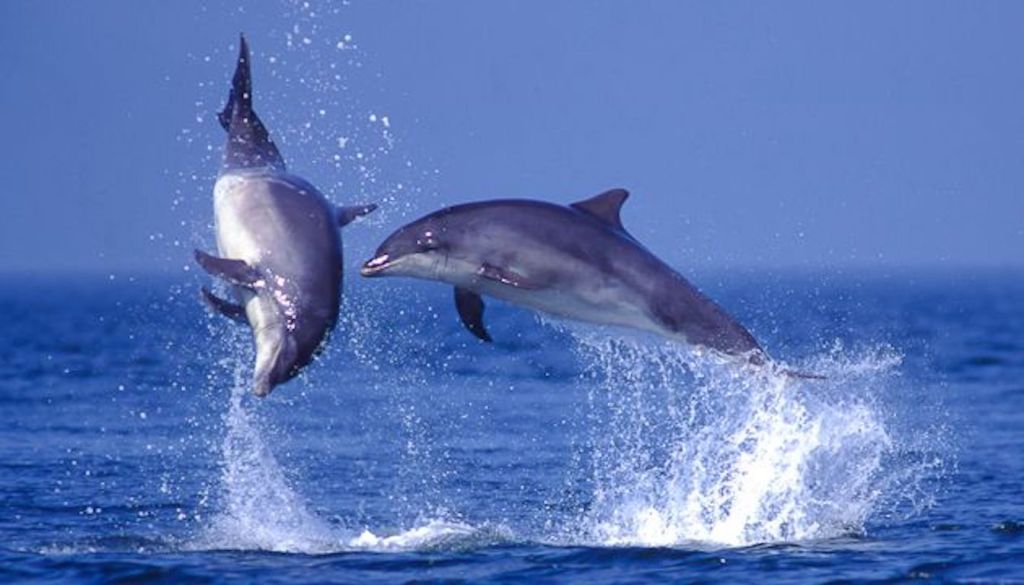
©David Ainsley
David and Jean Ainsley of Sealife Adventures run wildlife watching boat trips from near Oban. They told us why they’re supporting the Fight for Scotland’s Nature campaign:
We run a marine tourism business, Sealife Adventures, and have been operating within the area which is now the Firth of Lorn SAC (Special Area of Conservation) for over 30 years. The protections given to the area were based on a Complaint to the EU which led to a ban on scallop dredging 12 years ago.
Since then the area has become part of an SAC for porpoise and an MPA (Marine Protected Area) for flapper skate. We have seen a huge improvement in the wildlife and diversity in the region, including a very significant increase in abundance of species such as jewel anemones which require clear water, more fish and a 286 per cent increase in porpoise.
EU legislation has led to greater protection of Scotland’s wildlife and it is vital that this continues post-Brexit. We fully support the Fight for Scotland’s Nature campaign.”
 © David Ainsley
© David Ainsley

© David Ainsley
October 4th, 2019 by ie-admin
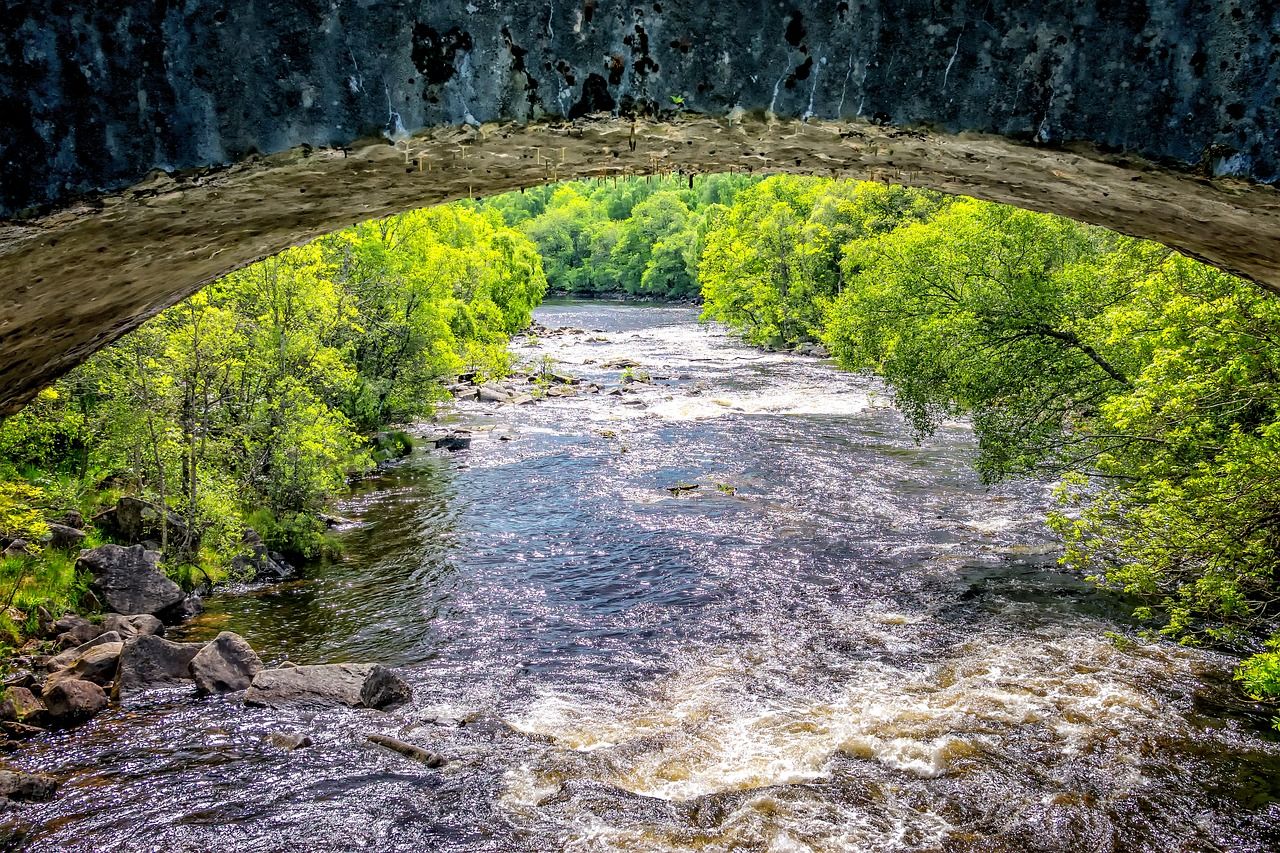
Scottish Government’s consultation receives public support for safeguarding nature from Brexit
New report from Scottish Environment LINK sets out proposals for ensuring that environmental protections can still be upheld if the UK exits the EU
Today the 2019 State of Nature Report, a comprehensive assessment from over 70 wildlife organisations and government agencies, showed that there has been no let up in the declines of nature across Scotland and the UK, and that urgent action is needed to reverse these declines.
The Scottish Government’s commendable ambitions to be world leaders on tackling the twin climate and nature crises cannot be achieved without the support of robust legislation and ways to uphold protections. That is why LINK welcomes the results of the Scottish Government’s consultation on Environmental Principles and Governance released today, which show strong support for strong new laws and institutions in Scotland, if the UK exits the EU.
Today’s consultation results show a genuine concern that Brexit may lead to negative impacts on environmental protection and that there is widespread support for the Scottish Government’s proposals to safeguard standards and introduce new arrangements for scrutinising and enforcing these protections.
70% of respondents to the consultation called for four key EU environmental principles to guide future Scottish Government policy, and there was also strong support for the creation of a new body to ensure that environmental protections are properly delivered and scrutinised. Several respondents also supported the introduction of an Environmental Court in Scotland.
LINK would like thank all of the individuals and organisations who participated in our Fight for Scotland’s Nature campaign, which contributed over 12,000 responses to the consultation. This is an overwhelming display of passion and support for Scotland’s nature, and we were particularly pleased to see the wonderful contributions of the young people from Sunnyside Primary School in Glasgow, and the Ullapool Sea Savers mentioned in the Scottish Government’s report.
We are therefore delighted to launch a new report from Professor Campbell Gemmell, commissioned by Scottish Environment LINK, which echoes many of the consultation responses and proposes some practical ways that the Scottish Government could achieve its welcome aims to maintain EU standards.
The report recommends that the Scottish Government:
- creates an independent Parliamentary Commissioner for the Environment to act as a watchdog;
- establishes a dedicated Environmental Court over the long- term to enforce standards;
- streamlines and strengthens environmental governance in Scotland.
Taking forward these recommendations would ensure environmental protections can still be upheld if the UK exits the EU. Such a comprehensive response to the risks of EU exit would mean that Scotland’s institutions are as strong as the environmental protections they uphold. It would ensure that government and its agencies are held to account, providing a fundamental democratic safeguard and giving the environment a strong voice at a time when it urgently needs to be heard.
Deborah Long, Chief Officer of Scottish Environment LINK, said:
The results of the Scottish Government’s consultation show that LINK’s concerns about the risks to Scotland’s species and habitats are shared by many. As we rapidly approach the Brexit deadline, we are in danger of losing guiding environmental principles and the ability to enforce high standards at a time when our natural world is already under threat from the twin climate and biodiversity emergencies.
The consultation results show widespread support for their proposals to maintain EU environmental principles and introduce new governance arrangements as a response to EU exit. Scottish Environment LINK is delighted to release this new report from Professor Campbell Gemmell on environmental governance, which we hope proposes a practical way forward on these issues. We look forward to discussing these solutions in more detail with the Scottish Government in the coming months.
LINK supports the Scottish Government’s welcome ambitions to ensure that Brexit does not lead to a downgrading of environmental protections, and we hope that this will be achieved through new legislation that embeds EU environmental principles in Scots law and creates a new environment watchdog to safeguard Scotland’s amazing wildlife and landscapes.
Notes:
[1] The analysis of the Scottish Government’s consultation on Environmental Principles and Governance can be found at: https://www.gov.scot/publications/analysis-responses-consultation-environmental-principles-governance/
[2] Campbell Gemmell’s report on Environmental Governance: effective approaches for Scotland post-Brexit can be accessed at: https://www.fightforscotlandsnature.scot/wp/wp-content/uploads/2019/10/REPORT-Environmental-Governance-effective-approaches-for-Scotland-post-Brexit-OCT-2019.pdf
[3] A summary of the report’s key findings has been produced by Scottish Environment LINK and can be accessed at: http://www.scotlink.org/public-documents/link-summary-of-report-environmental-governance-effective-approaches-for-scotland-post-brexit/
[4] Professor Campbell Gemmell is a Partner in Canopus Scotland Consulting, Professor of Environment Policy, Regulation and Governance at the University of Glasgow, Honorary Professor in the Faculty of Natural Sciences at the University of Stirling and an Adjunct Professor in the Future Industries Institute at UniSA, Adelaide.
He is former CEO of the South Australian EPA (2012 to 2014) and was CEO of SEPA 2003 to 2012 and SEPA Strategy Director 2001 to 2003.
Campbell was a member of Scottish Government’s Expert Roundtable on Environment and Climate Change and Chair of the independent review of Cleaner Air for Scotland.
[5] The Fight for Scotland’s Nature campaign has been coordinated by Scottish Environment LINK. It is supported by 37 environmental organisations and has called for a Scottish Environment Act that embeds EU environmental principles, establishes a new environmental watchdog and sets new targets for reversing nature decline. More details can be found at: https://www.fightforscotlandsnature.scot/what-we-stand-for/
September 11th, 2019 by ie-admin
Earlier this year the Intergovernmental Science-Policy Platform on Biodiversity and Ecosystem Services (IPBES) published the most comprehensive assessment ever conducted on the global state of nature. The stark conclusion was that nature is undergoing dangerous rates of decline unprecedented in human history, eroding the very foundations of our economies, livelihoods, food production, health and quality of life worldwide. For “marine systems”, the report concludes that “fishing has had the most impact on biodiversity (target species, non-target species and habitats) in the past 50 years alongside other significant drivers.” Nevertheless, the report also concludes it is not too late to make a difference if we start now with transformative change at every level, local to global.
Unfortunately, recent advice declared that an iconic component of Scotland’s marine biodiversity, North Sea cod, is again in a critical state and in need of emergency measures. In June, the International Council for Exploration of the Sea (ICES) scientific committee, an intergovernmental body, confirmed a significant decline in North Sea stocks and recommend a 70% reduction in total catch. Urgent leadership is therefore needed from all nations that catch North Sea cod, not least the Scottish Government who manage the majority of quota.
We have been here before. Cod stocks crashed so low through the 1980s and 90s that by the early 2000s ICES advised zero quotas, effectively suggesting the fishery should close. With the Scottish fleet largely taking the lead, various measures to recover the stock were introduced, including major fleet decommissioning followed by a Cod Recovery Plan that was agreed and implemented in 2009. Stock levels then recovered sufficiently for the Scottish cod fishery to achieve Marine Stewardship Council (MSC) certification, an ecolabel for sustainability, in 2009. Yet ten years later, North Sea cod is again on the brink of collapse.
Paradoxically, some might say illogically, a key area closed for cod recovery during the last crash in 2001, has just been re-opened to the concern of many. Following an EU technical amendment to regulations that applied there, a 4,000 km2 area west of Shetland known as the “Windsock” was largely re-opened to bottom-towed fishing, including trawling, on 14th August this year. It overlaps the West Shetland Shelf Marine Protected Area (MPA) designated in 2014 to protect offshore subtidal sands and gravels, an important spawning habitat for cod. Perhaps also complicated by the wider politics of Brexit, management proposals under the Common Fisheries Policy for this MPA have stalled. In the absence of statutory fisheries protection measures, almost two decades of seabed recovery, thanks to respite from bottom-contacting fishing gears, is now at risk.
Representatives of the Scottish fishing industry swiftly responded by seeking to develop voluntary measures to manage fishing activity. However, whilst this response is welcome, proposed fisheries measures for the MPA already exist on paper, if not yet in EU regulations, developed by the Scottish Government through engaging Scottish and EU fishers and NGOs in a more inclusive process several years ago. We are concerned that the environmental status of the MPA, and a potential hotspot for cod recovery, will be jeopardised if sufficient protection is not put in place.
Cod is more than a mere commodity for food and income, playing a keystone role in the North Sea ecosystem as both predator and prey. Continued decline will further unravel the North Sea ecosystem, risking another species loss amidst a global biodiversity crisis. All UK administrations have already failed to bring commercial fish stocks and seafloor condition up to “Good Environmental Status”, the EU benchmark of ecological health. Offering direct protection to cod and their spawning grounds for many years, the Windsock provided proof positive of the ecological and potential commercial benefits of protecting areas of seabed from trawling. Scientific surveys revealed an average 78% greater catch of cod, particularly larger animals with vastly greater reproductive potential, and other species inside compared to outside. We need more such protected areas, not fewer.
Measures must also urgently be put in place that control access to cod grounds, support population recovery and increase accountability. Effective compliance and full documentation are vital, including remote electronic monitoring systems with cameras and GPS to provide confidence in where fish are caught and how. Scotland’s oceans are a public good and all have a stake in them. We input to the recent national discussion on the future of fisheries management in Scotland where all share a vision of well-managed seas brimming with life that can support livelihoods forever. In the midst of a climate emergency and biodiversity crisis, urgent plans to recover cod stocks must recognise where they belong, at the heart of the ecosystem. Recovery of nature must be at the core of all fisheries management.
Calum Duncan
Head of Conservation Scotland, Marine Conservation Society
Convenor, Scottish Environment LINK Marine Group
September 10th, 2019 by ie-admin
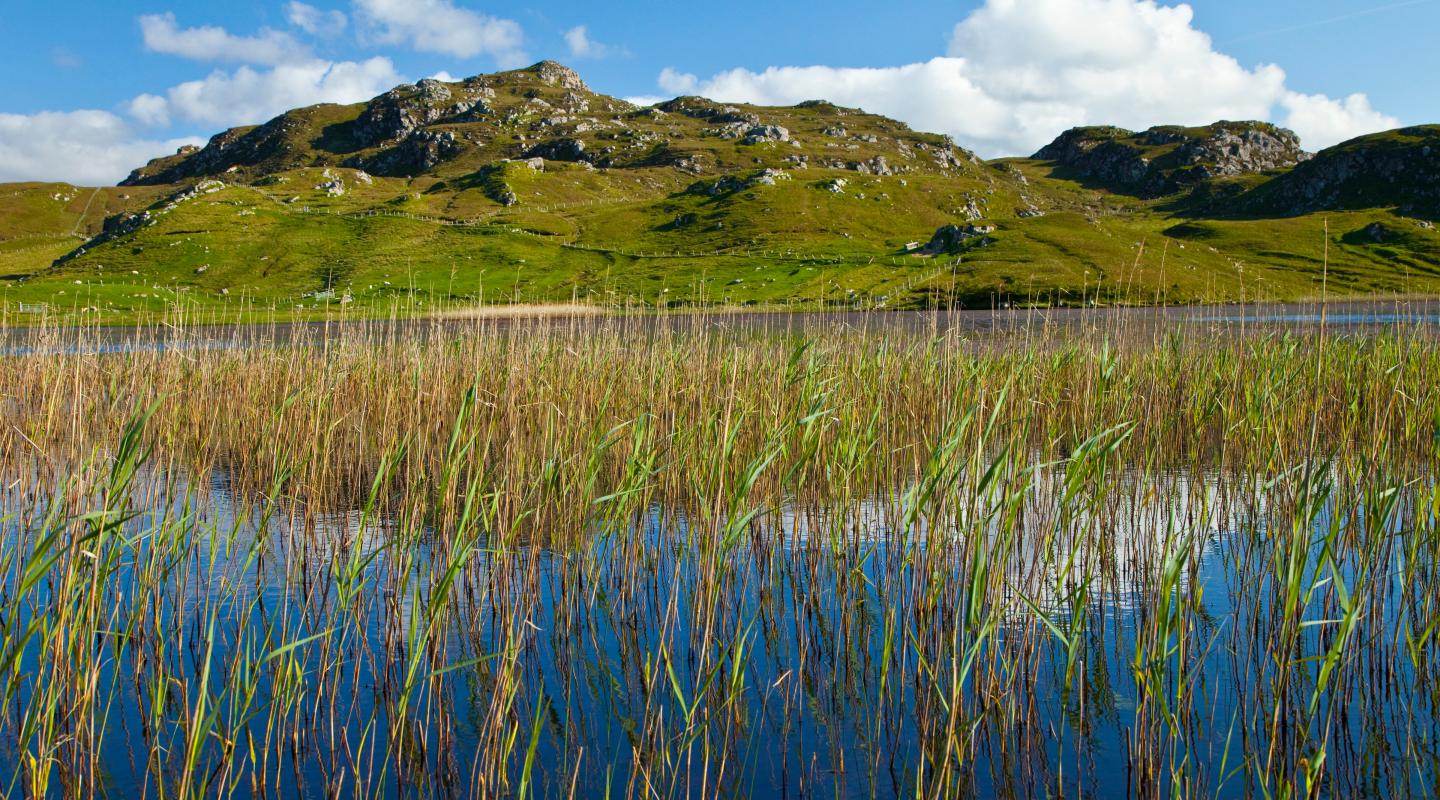
A new poll released today shows that more than three quarters of the Scottish public (86 per cent) say they are concerned about the potential threats to wildlife from climate change, habitat loss and pollution. In addition to this, a staggering 94 per cent have expressed that they see Scotland’s natural environment as ‘very important’ or ‘quite important’ to both Scotland’s economy and its national identity.
The survey was undertaken last month by Survation on behalf of Scottish Environment LINK, a coalition of Scotland’s leading charities. It revealed a huge strength of feeling among Scots for the country’s world – renowned nature. It also showed that almost all (92 per cent) of those surveyed believe nature and wildlife are important in making Scotland a good place to raise a family and are important to the health and wellbeing of people in Scotland.
Furthermore, 84% of people believe the Scottish Parliament should pass laws requiring the same or higher levels of environmental protection than current EU laws if the UK leaves the EU. This comes at a time when 1 in 11 species in Scotland is at risk of extinction.
This is why LINK has launched an unrelenting bid under the campaign Fight for Scotland’s Nature for Scotland to have its own Environment Act. The charities also feel that while the Scottish Government made measures to tackle the climate emergency central to last week’s Programme for Government announcement, the programme contained little detail on protecting Scotland’s environment and wildlife from the threats posed by Brexit.
More than half of those surveyed also believe that EU environmental principles should be passed into law by the Scottish Parliament and that either the Scottish Parliament or a new independent watchdog should have the power to issue instructions and enforce penalties against the Scottish Government if it fails to meet environmental standards and targets.
Deborah Long, chief officer of Scottish Environment LINK, said today: “The Scottish public place enormous value on Scotland’s wildlife and nature, and rightly so – our natural environment is integral to making Scotland a good place to live. People’s strength of concern about the threats facing our wildlife is clear, as is the determination that Brexit must not be allowed to weaken our environmental protections.
“It’s also clear that people believe that in the event of the UK leaving the EU, we need to make sure there are ways to hold the Scottish Government to account on environmental matters. Scottish Environment LINK is calling for a Scottish Environment Act that includes the establishment of a strong, well-resourced and independent watchdog.
“With Brexit potentially a matter of weeks away, it is now beyond urgent that the government sets out detailed plans for how Scotland will look after its environment in the event of departure from the EU.”
Notes
(1) Scottish Environment LINK is the forum for Scotland’s voluntary environment community, with over 35 member bodies representing a broad spectrum of environmental interests with the common goal of contributing to a more environmentally sustainable society.
LINK is a Scottish Charity (SC000296) and a Scottish Company Limited by guarantee (SC250899). LINK is core funded by Membership Subscriptions and by grants from Scottish Natural Heritage, Scottish Government and Charitable Trusts.
www.scotlink.org
2) People aged 16+ and living in Scotland were interviewed via online panel. Data was weighted to the profile of all Scottish people aged 16+. Data was weighted by age, sex, region and 2016 Scottish Parliamentary constituency vote.
Targets for the weighted data were derived from Office of National Statistics data and the results of the 2016 Scottish Parliamentary election.
(3) Full survey results are are available at https://www.fightforscotlandsnature.scot/wp/wp-content/uploads/2019/09/Scot-Link-final-tables-pdf.pdf
(4) More information about the Fight For Scotland’s Nature campaign can be found at www.fightforscotlandsnature.scot
September 3rd, 2019 by ie-admin
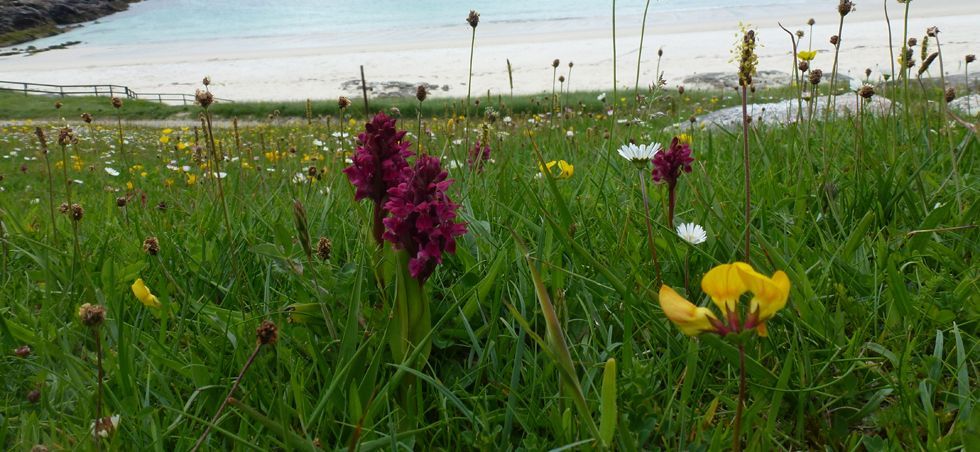
Given the overwhelming public support for action the new Programme for Government falls short of expectations. A recent survey undertaken by Survation on behalf of Scottish Environment LINK, a coalition of Scotland’s leading environmental charities has found that as many as 84% of Scots want the same or higher levels of environmental standards in the event of Brexit.
The Scottish Government’s 2019-2020 Programme for Government, launched today (3 September), has a strong climate emergency theme – with the need to act centre stage. A Circular Economy Bill, a Good Food Nation Bill, a strategic, climate friendly approach to land use and the inclusion of environmental principles in the Continuity Bill are all welcome.
However, it has failed to detail concrete steps that will give Scotland’s environment adequate protection from Brexit, if and when, we leave the EU. The proposals for effective and proportional governance do not detail what is intended and if this will include an independent watchdog. It is not proposed to underpin the Environment Strategy in statute or set legally binding objectives or targets for nature recovery. We cannot fully meet the climate emergency without tackling the nature crisis too. This is a missed opportunity, which is disappointing in an otherwise very welcome Programme.
At present, as much as 80 per cent of Scotland’s environmental protections stem from EU membership. This is why environmental charities in Scotland have launched an urgent bid under the campaign Fight for Scotland’s Nature for Scotland to have its own Environment Act. This will help to ensure that Brexit does not unravel crucial environment protections at a time when 1 in 11 species in Scotland is at risk of extinction.
Together, the charities are pushing for the needs of Scotland’s world-renowned nature not to be lost in the chaos around Brexit and for the Scottish Government to commit to protecting Scotland’s environment better, now and in the future. They want to see vital EU environmental principles embedded in Scots law; it is welcome that this is now to be included in the proposed Continuity Bill. For this to be meaningful they are also calling for the creation of an independent environmental watchdog and legally binding targets for the recovery and protection of Scotland’s nature. While governance measures are mentioned, these are not detailed.
The First Minister, Nicola Sturgeon, has said her government intends to legislate for environmental principles for Scotland and set out new arrangements for enforcing environmental protections. However, today’s Programme for Government does not state when such measures might be introduced, or whether there will be a watchdog with the power to hold Ministers to account on environmental performance.
Charles Dundas, Chair of Scottish Environment LINK, said today:
“I am pleased to see the grand swell of public opinion that more should be done to protect Scotland’s precious environment from the major threats it is facing. The climate and nature emergencies are intrinsically linked and must be tackled together, which is something the First Minister has also recognised. As such, we’d have liked to see a strong Environment Act for Scotland and an ambitious and consistent approach to nature recovery. With Brexit potentially a matter of weeks away, it is now beyond urgent that the government sets out detailed plans. Although we’d have liked to see more detail on governance and a legally binding strategy, it is very welcome to see the emphasis placed on addressing climate change, a Circular Economy and a Good Food Nation Bill.”
EU environmental protections are among the strongest in the world and year on year Scotland’s nature has hugely benefitted from these. However, Brexit and a rapid decline in the health of our environment here and across the world mean that urgent action is now required.
He added: “We welcome the First Minister’s reiteration of the commitment to maintain standards, but this needs to be supported by strong governance. The most glaring gap is the lack of proposals for a watchdog. Unless we can create a well-resourced and genuinely independent body to monitor and scrutinise environmental laws, policies and practice, with the ability to impose penalties, these protections will have little worth.”
On the circular economy, Matthew Crighton, Convenor of LINK’s Economics Group, said:
“It’s positive that there will be a Circular Economy Bill brought to Parliament. Creating a circular economy is an essential part of reducing greenhouse gas emissions as well as one of the best ways to reduce the damage which we are doing to nature. However, to ‘embed an innovative approach to reducing, reusing and recycling materials’ it will have to do more than increase recycling rates or reduce the flow of waste to landfill – the entire system needs to be transformed, starting with designing out waste and designing in re-use and the right to repair. The Programme for Government doesn’t mention setting targets for reducing our resource footprints but we are still hoping to see ambitious targets in this Bill.
Editors Notes
(1) Scottish Environment LINK is the forum for Scotland’s voluntary environment community, with over 35 member bodies representing a broad spectrum of environmental interests with the common goal of contributing to a more environmentally sustainable society.
LINK is a Scottish Charity (SC000296) and a Scottish Company Limited by guarantee (SC250899). LINK is core funded by Membership Subscriptions and by grants from Scottish Natural Heritage, Scottish Government and Charitable Trusts
2) People aged 16+ and living in Scotland were interviewed via online panel. Data was weighted to the profile of all Scottish people aged 16+. Data was weighted by age, sex, region and 2016 Scottish Parliamentary constituency vote.
Targets for the weighted data were derived from Office of National Statistics data and the results of the 2016 Scottish Parliamentary election.
(3) More information about the Fight For Scotland’s Nature campaign can be found at www.fightforscotlandsnature.scot
August 29th, 2019 by ie-admin
Scottish Environment LINK has joined more than 85 civil society organisations in signing an open letter to the Prime Minister expressing grave concerns about the impact of a no-deal Brexit.
You can read the letter here. For more information, visit the Brexit Civil Society Alliance.
Read our blog, ‘A No Deal Brexit is No Good for Scotland’s Environment‘, published back in March.
August 26th, 2019 by ie-admin
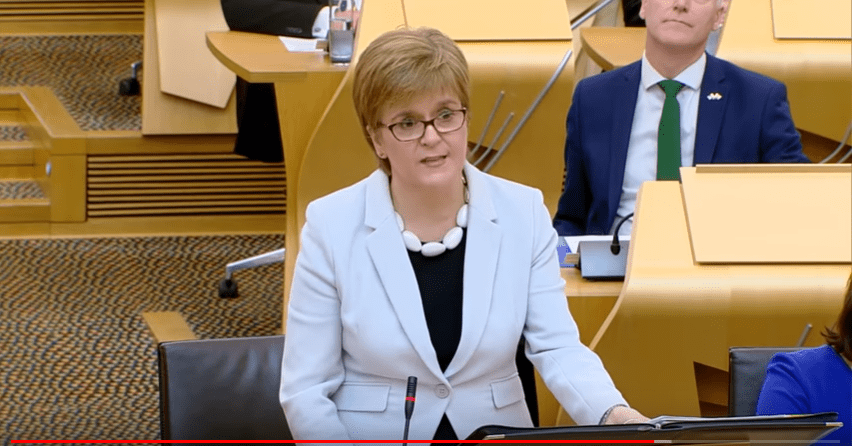
By Deborah Long, chief officer of Scottish Environment LINK
In June, LINK brought together 97 organisations to write to the First Minister to ask her to take action to protect, enhance and restore our environment – as the best insurance against climate change and to provide subsequent generations with a sustainable future. You can read our letter here. This was in the context of her declaration of a climate emergency and the need to act.
You can read the First Minister’s reply here.
Today’s climate and ecological emergencies are inextricably linked, and working to tackle one contributes to tackling the other. And it is clear that time to act is running out: the Intergovernmental Panel on Climate Change (IPCC) gives us 10 years to cut carbon emissions, while a major UN report on biodiversity estimates that 1 million species are at risk of extinction.
Species and habitat diversity, within fully functioning ecosystems, are essential for our future resilience, offering us protection against dramatic climate events such as flooding, and against major epidemics amongst humans and the crops we rely on.
We all know what’s at stake: younger generations are pointing the finger at politicians and other adults in positions to do something about these emergencies. It is time for the talking to lead to effective action.
Scotland trades on its image as a country with a clean and vibrant natural environment. But that environment, although green on the outside, is not as healthy as it could be: species are declining at sea and on land, habitats are fragmenting, soils are degrading. We need to reverse all of this if we are to face and survive climate change.
Scotland could lead the world, but we need political leadership and the will to make some tough choices in favour of the natural environment now. That means within the next 10 years.
This is actually possible in Scotland. The First Minister’s reply to our letter underlines her government’s commitment to introduce new legislation for Scotland’s environment. It reiterates her, and the Scottish Government’s, recognition of the importance of the natural environment and their responsibility to it. The recognition that the challenges facing biodiversity are as important as the challenge of climate change is also very welcome, as is the ambition for Scotland to lead the way.
Scotland has made a positive start with the target to reach net zero greenhouse gas emissions by 2045. We look forward to the government’s own analysis of Scotland’s action towards the Global Biodiversity Targets, and to the State of Nature partnership’s analysis of trends leading up to 2020. These reports will inform us on how much progress we have made, and what we must do before the targets are revised in 2020 as part of the next meeting on the Convention of Biodiversity in China in 2020.
And Scotland has made progress in relation to proposed legislation to ban plastic cotton buds and introduce a deposit return scheme, along with woodland planting and peatland restoration. However, within the time scale we have and against the challenges that remain, we are still not doing enough, nor are we doing it quickly enough.
Brexit and whatever follows cannot derail our ambition and focus on the emergency of climate change and the ecological crisis.
LINK believes that the most efficient way of enabling and supporting this non-negotiably vital work is through a Scottish Environment Act. Such an act needs to include a truly independent, well-resourced and empowered watchdog, and must require the delivery of a strategy and the setting of targets against which progress can be judged.
While the environment strategy being developed by the Scottish Government is welcome, unless it is underpinned by effective legislation it will be unable on its own to bring about the changes we need to see. We already have strategies that if enacted effectively could have been reversing some of the negative trends. The Biodiversity Strategy launched in 2004 and the Land Use Strategy launched in 2011 are both forward-looking in their approach, but neither are being implemented or enforced in a way that makes any significant change happen.
We cannot afford to wait any longer. Now is the time to act, with a strong and comprehensive Environment Bill developed this autumn and winter for introduction to Parliament by Easter 2020. That would enable Scotland to be world leading, at the time when Scotland’s people need it and when the world focuses on biodiversity conservation as the 2020 targets are renewed, and when significant progress towards net zero needs to be underway.
We look forward to working with Ministers and the Scottish Government to achieve our shared ambitions for the environment. We’ll be looking at the Government’s plans for the next 12 months to see how far we can get together in the fight against climate change and for nature.
August 26th, 2019 by ie-admin
A blog by Deborah Long, LINK chief officer
In June, LINK brought together 97 organisations to write to the First Minister to ask her to take action to protect, enhance and restore our environment – as the best insurance against climate change and to provide subsequent generations with a sustainable future. You can read our letter here. This was in the context of her declaration of a climate emergency and the need to act.
You can read the First Minister’s reply here.
Today’s climate and ecological emergencies are inextricably linked, and working to tackle one contributes to tackling the other. And it is clear that time to act is running out: the Intergovernmental Panel on Climate Change (IPCC) gives us 10 years to cut carbon emissions, while a major UN report on biodiversity estimates that 1 million species are at risk of extinction.
Species and habitat diversity, within fully functioning ecosystems, are essential for our future resilience, offering us protection against dramatic climate events such as flooding, and against major epidemics amongst humans and the crops we rely on.
We all know what’s at stake: younger generations are pointing the finger at politicians and other adults in positions to do something about these emergencies. It is time for the talking to lead to effective action.
Scotland trades on its image as a country with a clean and vibrant natural environment. But that environment, although green on the outside, is not as healthy as it could be: species are declining at sea and on land, habitats are fragmenting, soils are degrading. We need to reverse all of this if we are to face and survive climate change.
Scotland could lead the world, but we need political leadership and the will to make some tough choices in favour of the natural environment now. That means within the next 10 years.
This is actually possible in Scotland. The First Minister’s reply to our letter underlines her government’s commitment to introduce new legislation for Scotland’s environment. It reiterates her, and the Scottish Government’s, recognition of the importance of the natural environment and their responsibility to it. The recognition that the challenges facing biodiversity are as important as the challenge of climate change is also very welcome, as is the ambition for Scotland to lead the way.
Scotland has made a positive start with the target to reach net zero greenhouse gas emissions by 2045. We look forward to the government’s own analysis of Scotland’s action towards the Global Biodiversity Targets, and to the State of Nature partnership’s analysis of trends leading up to 2020. These reports will inform us on how much progress we have made, and what we must do before the targets are revised in 2020 as part of the next meeting on the Convention of Biodiversity in China in 2020.
And Scotland has made progress in relation to proposed legislation to ban plastic cotton buds and introduce a deposit return scheme, along with woodland planting and peatland restoration. However, within the time scale we have and against the challenges that remain, we are still not doing enough, nor are we doing it quickly enough.
Brexit and whatever follows cannot derail our ambition and focus on the emergency of climate change and the ecological crisis.
LINK believes that the most efficient way of enabling and supporting this non-negotiably vital work is through a Scottish Environment Act. Such an act needs to include a truly independent, well-resourced and empowered watchdog, and must require the delivery of a strategy and the setting of targets against which progress can be judged.
While the environment strategy being developed by the Scottish Government is welcome, unless it is underpinned by effective legislation it will be unable on its own to bring about the changes we need to see. We already have strategies that if enacted effectively could have been reversing some of the negative trends. The Biodiversity Strategy launched in 2004 and the Land Use Strategy launched in 2011 are both forward-looking in their approach, but neither are being implemented or enforced in a way that makes any significant change happen.
We cannot afford to wait any longer. Now is the time to act, with a strong and comprehensive Environment Bill developed this autumn and winter for introduction to Parliament by Easter 2020. That would enable Scotland to be world leading, at the time when Scotland’s people need it and when the world focuses on biodiversity conservation as the 2020 targets are renewed, and when significant progress towards net zero needs to be underway.
We look forward to working with Ministers and the Scottish Government to achieve our shared ambitions for the environment. We’ll be looking at the Government’s plans for the next 12 months to see how far we can get together in the fight against climate change and for nature.
August 14th, 2019 by ie-admin
A blog by Deborah Long, LINK Chief Officer.
The challenges that we face as a planet are significant right now: natural challenges of climate change and biodiversity, and human made challenges of democracy, including Brexit and the aftermath of the American presidential election. If there is ever a time for sophisticated and methodical thinking, that time is now. With the complexity of natural systems, feedback loops and tipping points, the potential opportunities of a systems approach to these challenges become clear.
A systems thinking approach is not a new concept: it’s not even a human concept. Ecosystems operate in a systems approach. Systems thinking has become a vital tool for business and brings a more robust approach to decision making and action delivery.
However, a systems thinking approach is not yet being used effectively in national policy making. A systems approach to land management for example, would see stakeholder engagement being used to produce a national strategic plan, implemented by key stakeholders according to agreed and specific principles, supported by government and relevant legislation to deliver an overall clear and measurable objective with feedback loops and regular analysis to correct direction if needed. This should be how Scotland’s Land Use Strategy works: its issue is that it lacks specific principles and spatial tools that are consistently applied to land use decisions. The net result is that planning and development decisions are not being made strategically, and this is making the fragmentation of habitats, cost of national infrastructures and efficiency of spend even worse.
If we were to use systems thinking to address Scotland’s planning and land use dilemmas, it may look something like this:
What are our priorities to achieve from Scotland’s land?
- Increased renewable energy
- Healthy food accessible by all communities
- Efficient infrastructures including IT, transport and energy transmission
- Intelligently planned communities with full access to a healthy environment and the services they require, including schools, doctors, access to shops
What is the context of that?
- A country of just over 80,000 km2 of land
- A climate emergency that requires us to increase carbon sequestration and decrease the amount of energy we use
- A biodiversity emergency that is losing species through pressures of land use practices and climate change
- A country that is home to nearly 5 million people who all require a safe and healthy environment, access to healthy food, a living income and access to key services
- A country with the potential to be world leading in terms of environment, civic society and planetary responsibility.
How do we reconcile these needs?
Mapping: what resource do we have, where is it, where are the suppliers and where are the consumers?
Identifying and managing needs: how much of each do we need to function? How can we manage that level of need? How do we meet that need given the constraints identified in 1?
Who meets these needs? Who has these needs?
How do we make decisions?
Agreeing that these priorities must come first: every decision needs to be cross checked against each priority and scored: a negative impact on one of the priorities is marked down and a positive impact is marked up. For any decision to be carried, a significant contribution to at least one priority must be made and no negative impacts can be made. Conflicts will inevitably arise in this system: which is why communities need to be engaged – and independent experts need to be engaged. Both groups of stakeholders would be required to offer evidence of the impact of each decision and offer mitigation solutions.
Could we adopt system approach in Scottish policy making?
In theory we could. It requires the maturity of approach to involve a diversity of stakeholders: from local to national levels. We can only achieve this if stakeholders can engage and want to engage. They need access to decision making processes and accessible processes in terms of language and finances. Above all, however, this approach requires buy in and support from government and politicians. That level of support is not clear: is Scotland’s policy making process mature enough to be able to put this in place and achieve our priorities? The languishing status of the Land Use Strategy suggests not.
July 26th, 2019 by ie-admin

Stand up for the nature you love! Is it bumblebees in your local park? Puffins in the Firth of Forth? Oak trees on the banks of Loch Lomond?
Join the Fight for Scotland’s Nature by tweeting your nature pictures or videos to Nicola Sturgeon.
1/ Take a photo or video of what you love. Maybe you’re in the picture too.
2/ Tweet your picture or video to Nicola Sturgeon on @ScotGovFM using the hashtag #FightForScotlandsNature.
https://twitter.com/CalumLangdale/status/1153327406763008000?s=20
https://twitter.com/PeteHaskell/status/1153961960372916224?s=20
Don’t have a picture? Write the name of what you’re standing up for on a piece of paper and take a selfie of yourself with it.
Search for #FightForScotlandsNature on Twitter to see what others are standing up for!








